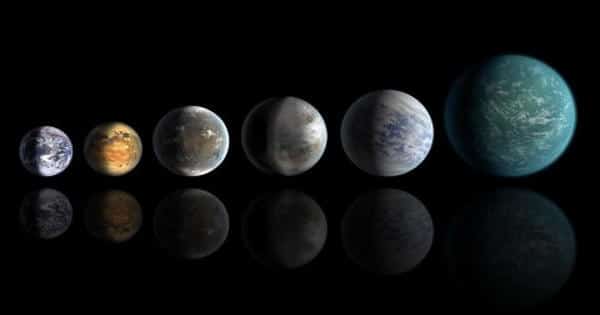A new mechanism discovered by researchers may indicate that there are many more water-rich planets with atmospheres in the universe than previously thought. An atmosphere is what allows life to exist on Earth’s surface by regulating our climate and shielding us from harmful cosmic rays. Despite the fact that telescopes have discovered an increasing number of rocky planets, scientists believed that most of their atmospheres had long since vanished.
However, a new study by University of Chicago and Stanford University researchers suggests a mechanism by which these planets could not only develop, but also maintain, atmospheres rich in water vapor for extended periods of time. The study, which was published on March 15 in the Astrophysical Journal Letters, adds to our understanding of planetary formation and could help direct the search for habitable worlds in other star systems.
“Our model predicts that these hot, rocky exoplanets will have a water-dominated atmosphere at some point, which could take a long time for some planets,” said Asst. Prof. Edwin Kite, an expert on how planetary atmospheres evolve over time.
A new study found that hot, rocky exoplanets could not only develop atmospheres full of water vapor but keep them for long stretches.
Scientists are trying to figure out what exoplanets might look like as telescopes discover more of them. In general, telescopes can tell you how big an exoplanet is, how close it is to its star, and, if you’re lucky, how much mass it has. To advance much further, scientists must extrapolate from what we know about Earth and the other planets in our solar system. However, the most abundant planets do not appear to be like the ones we see around us.
“What we already knew from the Kepler mission is that planets a little smaller than Neptune are extremely abundant, which surprised us because there are none in our solar system,” Kite said. “We don’t know what they’re made of for sure, but there’s strong evidence they’re magma balls cloaked in a hydrogen atmosphere.”
There is also a slew of smaller rocky planets that are similar but lack hydrogen cloaks. As a result, scientists hypothesized that many planets, like those larger planets with hydrogen atmospheres, begin with hydrogen atmospheres but lose them when a nearby star ignites and blows away the hydrogen.
However, many details in those models remain to be filled in. Kite and co-author Laura Schaefer of Stanford University began to investigate some of the potential consequences of a planet covered in melted rock oceans.

Telescope observations provide astronomers with information about the size of an exoplanet, its proximity to its host star, and, in some cases, its mass. Extrapolations based on what we know about Earth and other planets in our solar system yield additional planetary details. Given that our solar system’s planets are not among the most abundant in the universe, our understanding of more abundant planetary types is very limited.
“Liquid magma is actually quite runny,” Kite explained, so it turns over vigorously, just like Earth’s oceans. There’s a good chance that these magma oceans are sucking hydrogen from the atmosphere and recombining it with oxygen to form water. Some of the water escapes into the atmosphere, but much of it is sucked up into the magma.
After the nearby star has stripped away the hydrogen atmosphere, the water is drawn out into the atmosphere in the form of water vapor. Eventually, the planet’s atmosphere is dominated by water.
According to Kite, this stage could last billions of years on some planets. There are several ways to put this hypothesis to the test. The powerful successor to the Hubble Telescope, the James Webb Space Telescope, is set to launch later this year and will be capable of measuring the composition of an exoplanet’s atmosphere. One signal would be if it detects planets with water in their atmospheres. Another method of testing is to look for indirect indications of atmospheres. Most of these planets are tidally locked; unlike Earth, they do not spin as they orbit their sun, so one side is always hot and the other is always cold.
A pair of UChicago alumni have proposed using this phenomenon to detect the presence of an atmosphere. Scientists Laura Kreidberg, PhD’16, and Daniel Koll, PhD’16, now at the Max Planck Institute for Astronomy and MIT, respectively, pointed out that an atmosphere would moderate the planet’s temperature, preventing a sharp difference between the day and night sides. If a telescope can detect how brightly the dayside glows, it should be able to determine whether or not there is an atmosphere redistributing heat.
However, the current study suggests that because liquid magma is quite runny and turns over vigorously, similar to the Earth’s oceans, it may be able to absorb hydrogen from the atmosphere and react with it to form water. After the nearby star has stripped away all of the hydrogens in the planet’s atmosphere, the water will be drawn out into the atmosphere as water vapor. This would leave the planet with a water-dominated atmosphere, which the researchers believe could last for billions of years.















